Abstract
The effects of intragastric infusion of 10% Intralipid and 10% dextrose on the intraluminal pressures in the antrum, pylorus and duodenal bulb have been examined. Ten studies with each infusate have been performed in 10 normal subjects and the results compared with those obtained previously in 22 studies during intragastric infusion of isotonic saline. During saline infusion, contractile activity varied. In six studies fasting motor activity persisted; in the remainder, variable activity, without recognisable pattern was recorded. With saline, the gastroduodenal region usually functioned as a unit and the pylorus was the least autonomous part. Neither a sustained rise of basal pressure nor rhythmic, independent contractions were recorded from the pylorus. The contractile activity of the gastroduodenal region with Intralipid and dextrose was more uniform than with saline. Fasting motor activity was always abolished. The gastroduodenal region ceased to contract as a unit and the pylorus acquired autonomous activity. Rhythmic, independent contractions of the pylorus were recorded in nine of 10 studies during Intralipid infusion and six of 10 studies with dextrose. In addition, a sustained rise in pyloric basal pressure was recorded in eight of 10 studies with Intralipid and three of 10 studies with dextrose. Pyloric motility indices were significantly greater with fat than with dextrose. The observed differences in gastroduodenal motility are consistent with a role for the pylorus in the control of emptying of liquid from the stomach.
Full text
PDF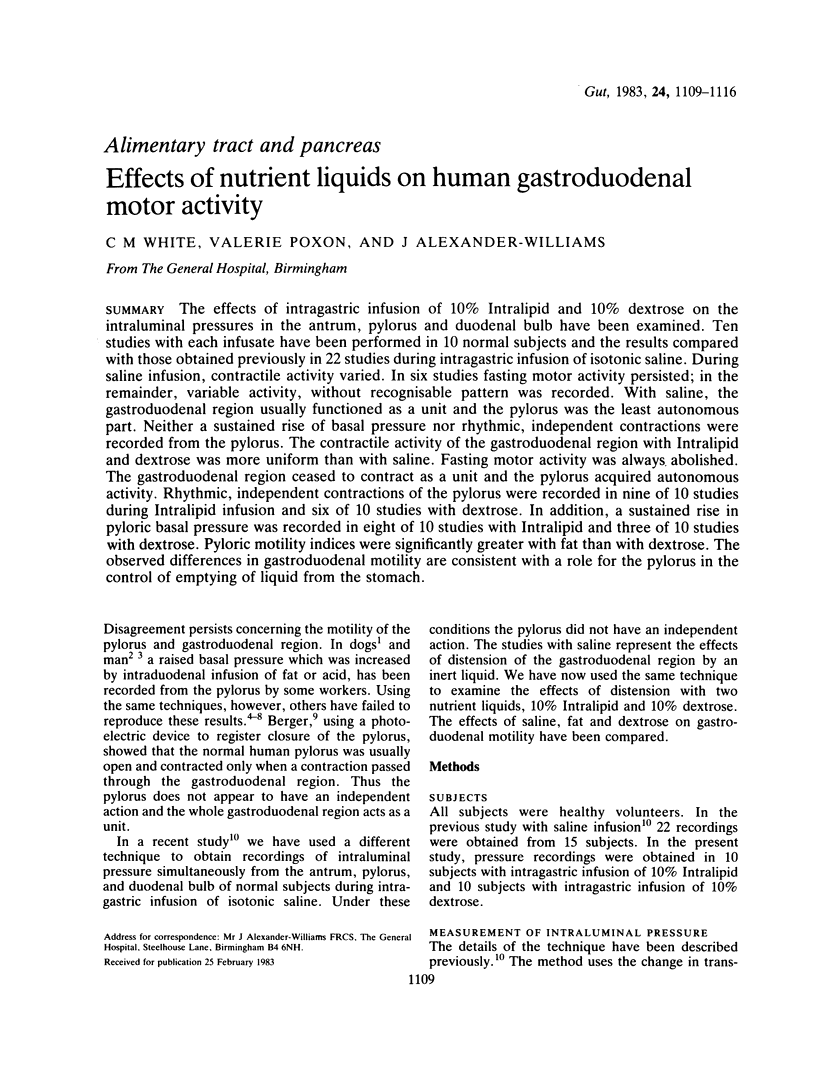
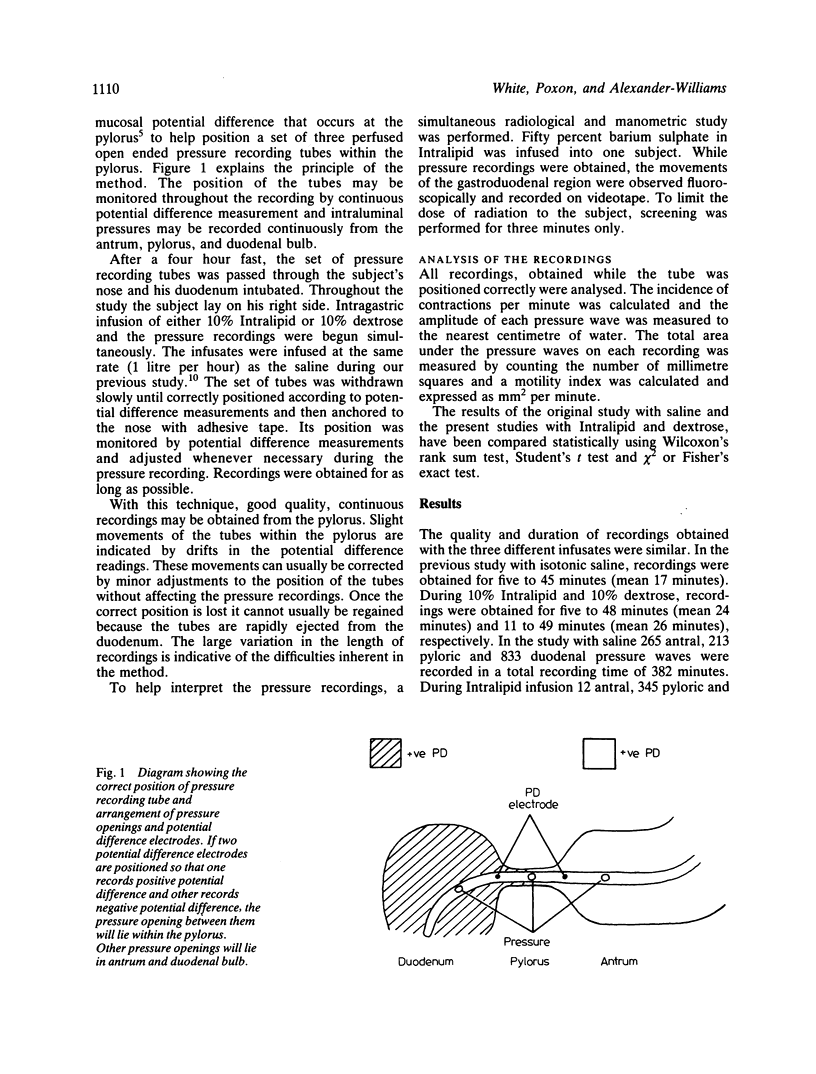
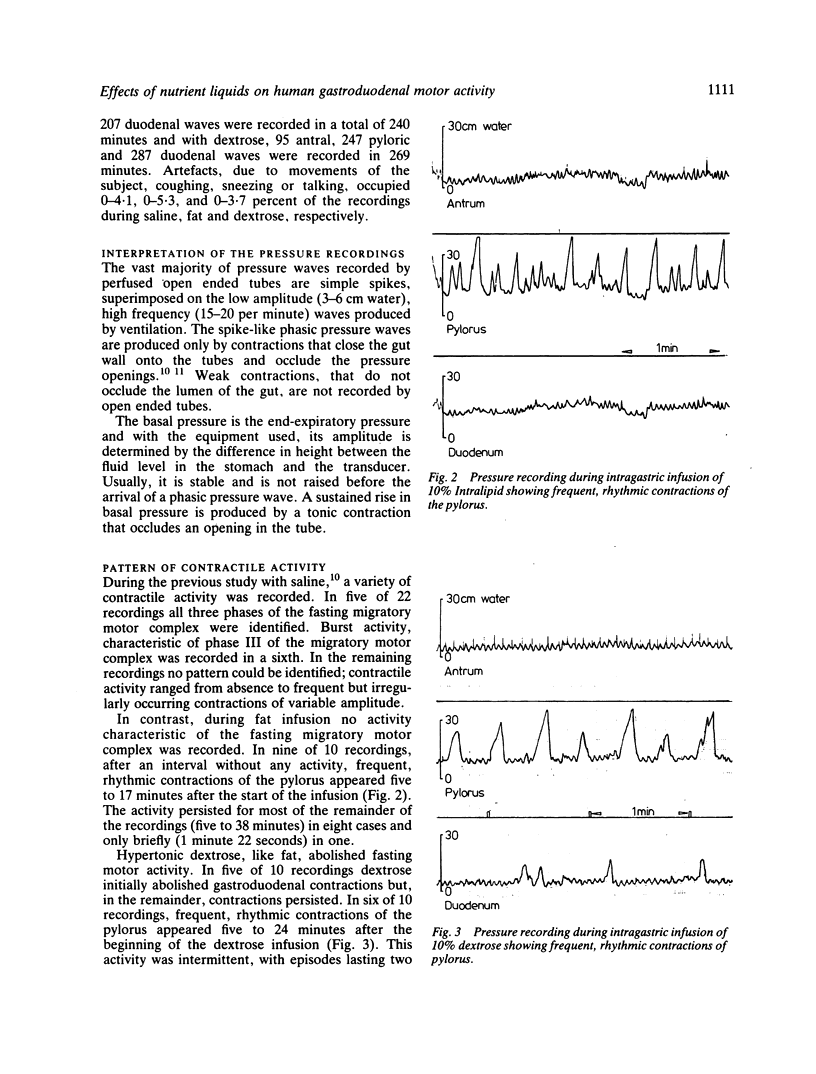
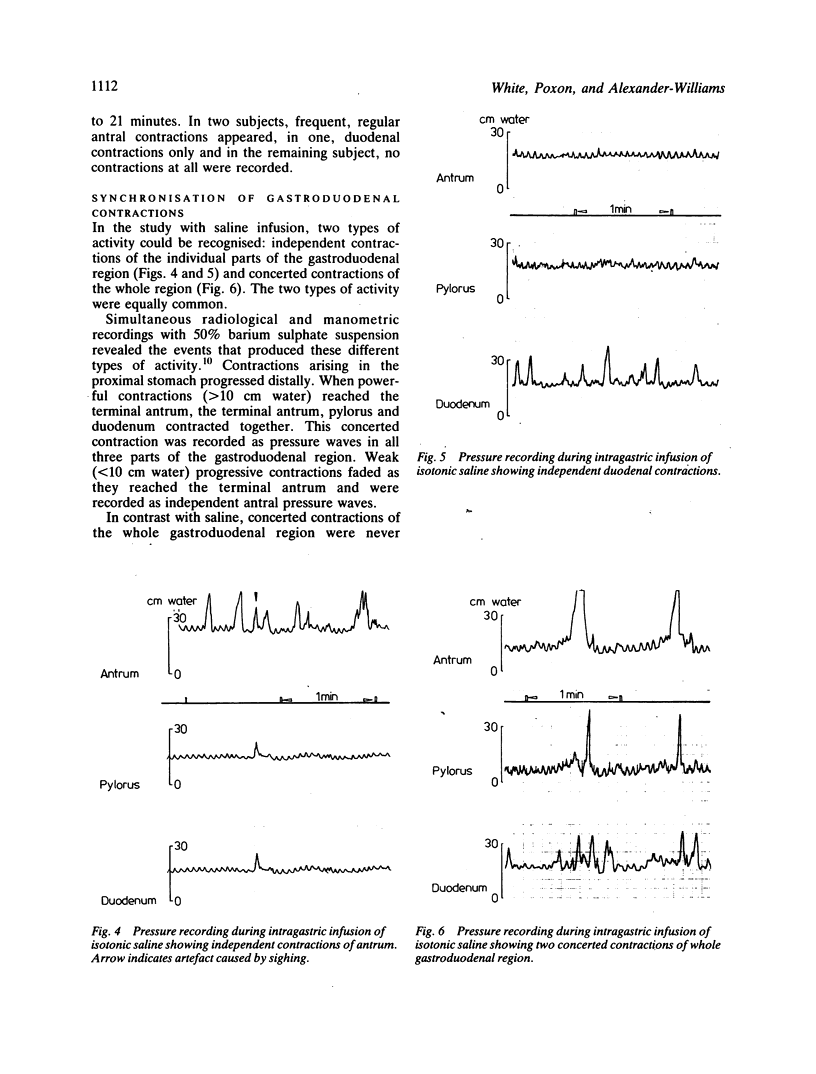
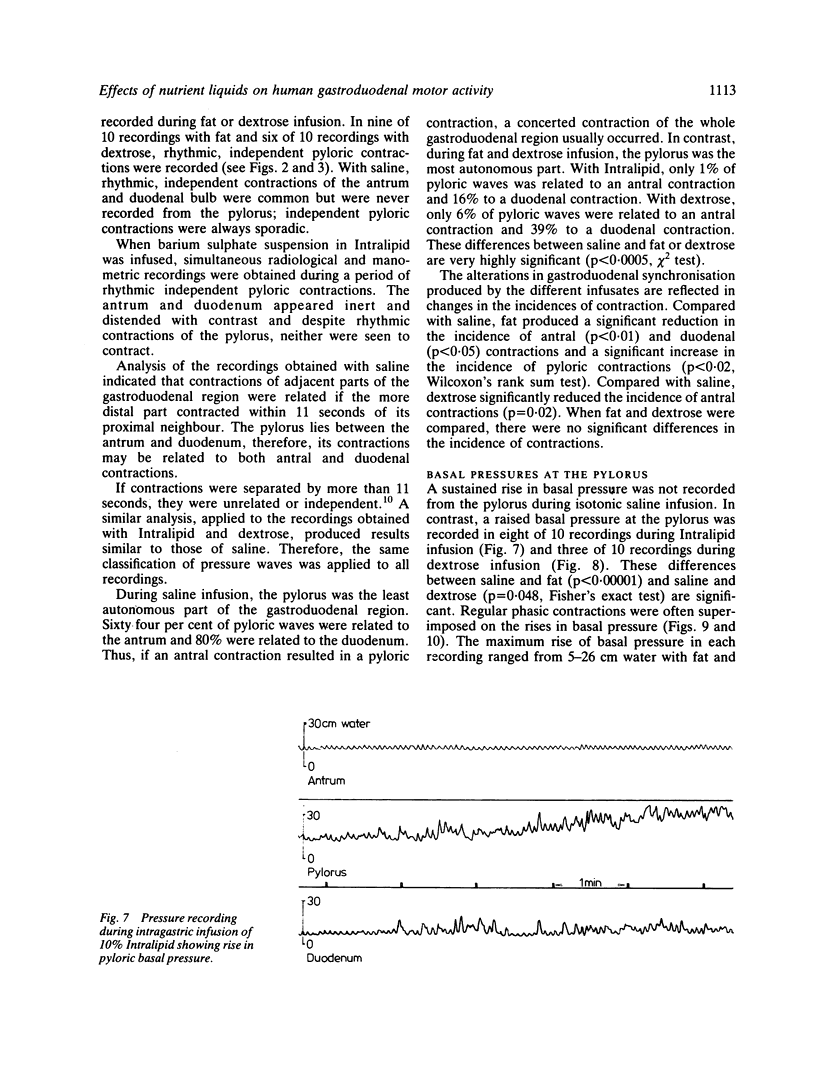
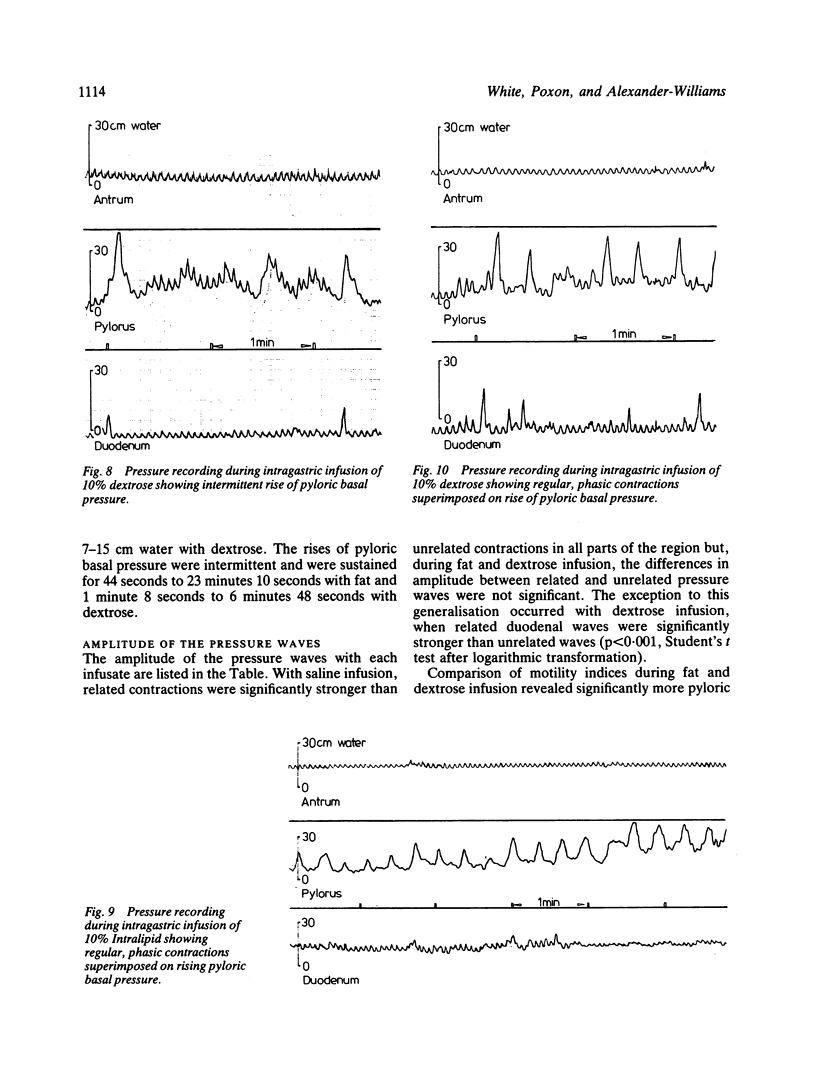
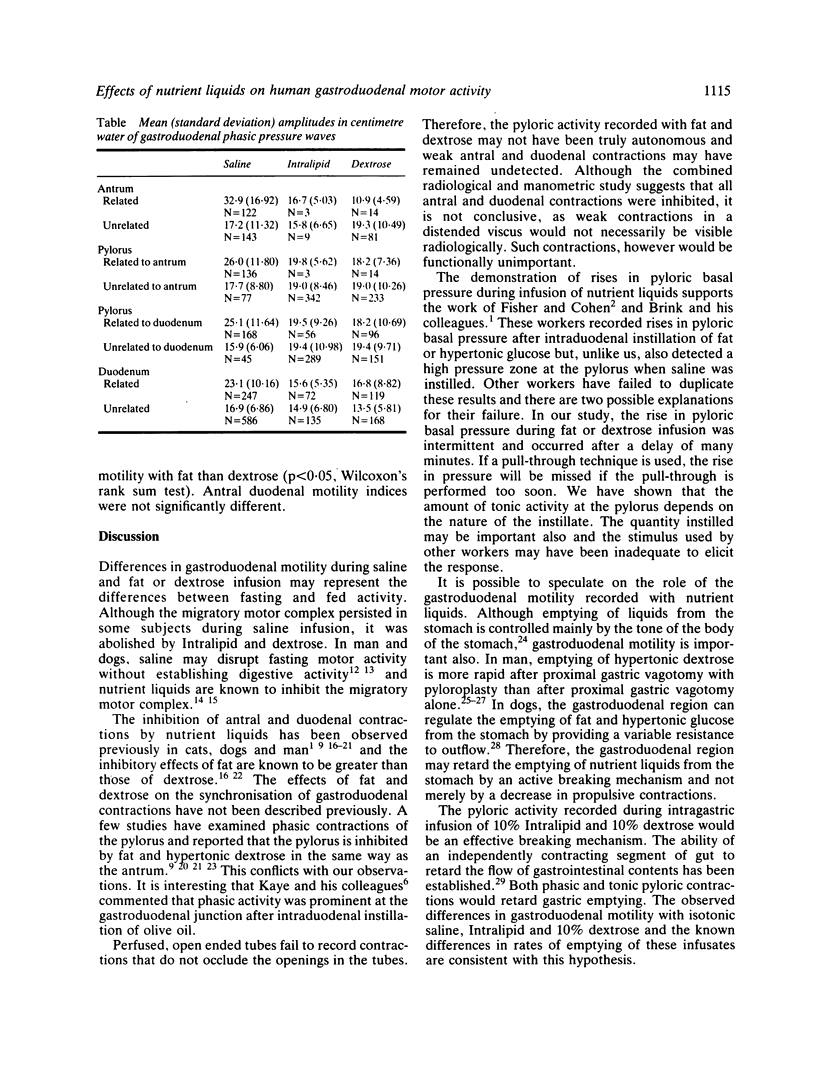
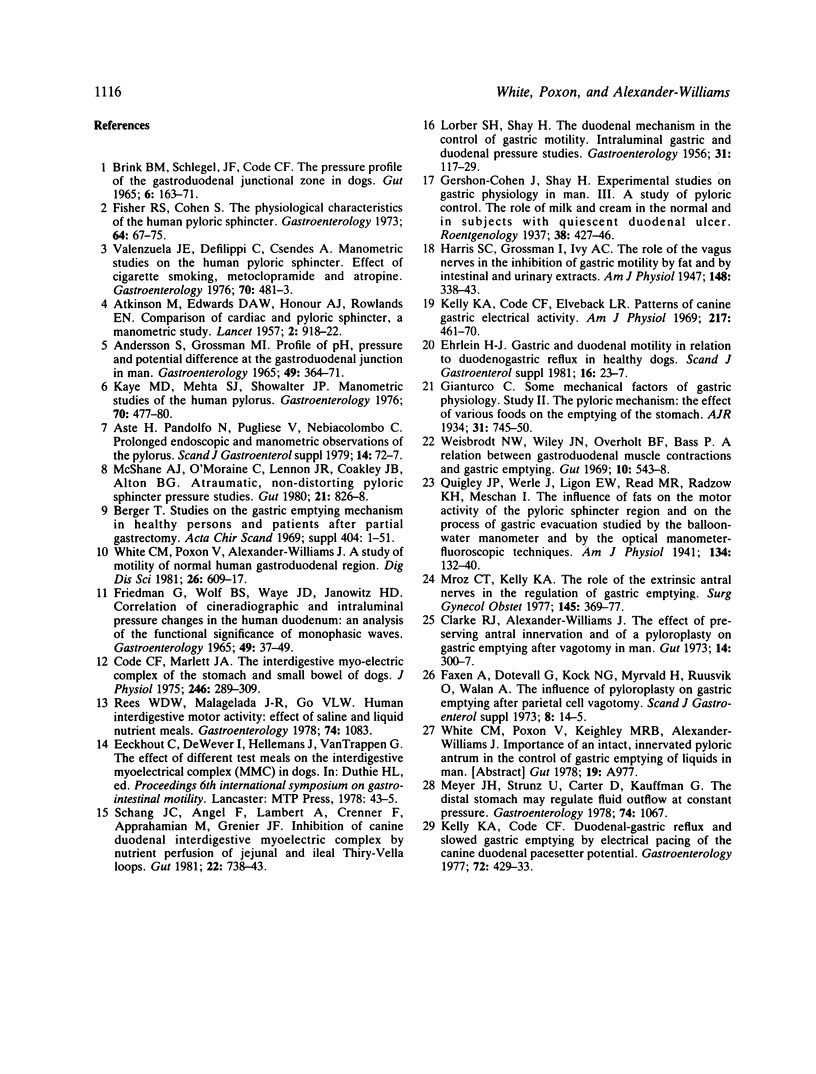
Selected References
These references are in PubMed. This may not be the complete list of references from this article.
- ATKINSON M., EDWARDS D. A., HONOUR A. J., ROWLANDS E. N. Comparison of cardiac and pyloric sphincters; a manometric study. Lancet. 1957 Nov 9;273(7002):918–922. doi: 10.1016/s0140-6736(57)92381-4. [DOI] [PubMed] [Google Scholar]
- Andersson S., Grossman M. I. Profile of pH, pressure, and potential difference at gastroduodenal junction in man. Gastroenterology. 1965 Oct;49(4):364–371. [PubMed] [Google Scholar]
- BRINK B. M., SCHLEGEL J. F., CODE C. F. THE PRESSURE PROFILE OF THE GASTRODUODENAL JUNCTIONAL ZONE IN DOGS. Gut. 1965 Apr;6:163–171. doi: 10.1136/gut.6.2.163. [DOI] [PMC free article] [PubMed] [Google Scholar]
- Berger T. Studies on the gastric emptying mechanism in healthy persons and patients after partial gastrectomy. Acta Chir Scand Suppl. 1969;404:1–51. [PubMed] [Google Scholar]
- Clarke R. J., Alexander-Williams J. The effect of preserving antral innervation and of a pyloroplasty on gastric emptying after vagotomy in man. Gut. 1973 Apr;14(4):300–307. doi: 10.1136/gut.14.4.300. [DOI] [PMC free article] [PubMed] [Google Scholar]
- Code C. F., Marlett J. A. The interdigestive myo-electric complex of the stomach and small bowel of dogs. J Physiol. 1975 Mar;246(2):289–309. doi: 10.1113/jphysiol.1975.sp010891. [DOI] [PMC free article] [PubMed] [Google Scholar]
- Fisher R., Cohen S. Physiological characteristics of the human pyloric sphincter. Gastroenterology. 1973 Jan;64(1):67–75. [PubMed] [Google Scholar]
- Kaye M. D., Mehta S. J., Showalter J. P. Manometric studies of the human pylorus. Gastroenterology. 1976 Apr;70(4):477–480. [PubMed] [Google Scholar]
- Kelly K. A., Code C. F. Duodenal-gastric reflux and slowed gastric emptying by electrical pacing of the canine duodenal pacesetter potential. Gastroenterology. 1977 Mar;72(3):429–433. [PubMed] [Google Scholar]
- Kelly K. A., Code C. F., Elveback L. R. Patterns of canine gastric electrical activity. Am J Physiol. 1969 Aug;217(2):461–470. doi: 10.1152/ajplegacy.1969.217.2.461. [DOI] [PubMed] [Google Scholar]
- LORBER S. H., SHAY H. The duodenal mechanism in the control of gastric motility; intraluminal gastric and duodenal pressure studies. Gastroenterology. 1956 Aug;31(2):117–130. [PubMed] [Google Scholar]
- McShane A. J., O'Morain C., Lennon J. R., Coakley J. B., Alton B. G. Atraumatic non-distorting pyloric sphincter pressure studies. Gut. 1980 Oct;21(10):826–828. doi: 10.1136/gut.21.10.826. [DOI] [PMC free article] [PubMed] [Google Scholar]
- Mroz C. T., Kelly K. A. The role of the extrinsic antral nerves in the regulation of gastric emptying. Surg Gynecol Obstet. 1977 Sep;145(3):369–377. [PubMed] [Google Scholar]
- Schang J. C., Angel F., Lambert A., Crenner F., Aprahamian M., Grenier J. F. Inhibition of canine duodenal interdigestive myoelectric complex by nutrient perfusion of jejunal and ileal Thirty-Vella loops. Gut. 1981 Sep;22(9):738–743. doi: 10.1136/gut.22.9.738. [DOI] [PMC free article] [PubMed] [Google Scholar]
- Valenzuela J. E., Defilippi C., Csendes A. Manometric studies on the human pyloric sphincter. Effect of cigarette smoking, metoclopramide, and atropine. Gastroenterology. 1976 Apr;70(4):481–483. [PubMed] [Google Scholar]
- Weisbrodt N. W., Wiley J. N., Overholt B. F., Bass P. A relation between gastroduodenal muscle contractions and gastric empyting. Gut. 1969 Jul;10(7):543–548. doi: 10.1136/gut.10.7.543. [DOI] [PMC free article] [PubMed] [Google Scholar]
- White C. M., Poxon V., Alexander-Williams J. A study of motility of normal human gastroduodenal region. Dig Dis Sci. 1981 Jul;26(7):609–617. doi: 10.1007/BF01367673. [DOI] [PubMed] [Google Scholar]


